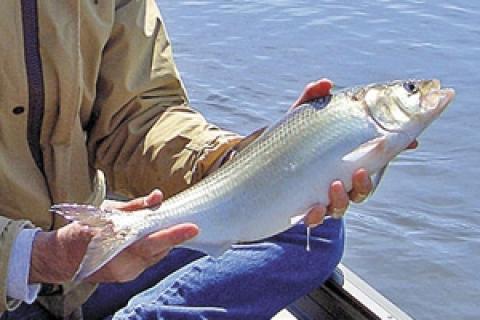
 Springtime shad fishing in South Carolina is already well underway by late February, and anglers love to get on the water and chase these fish. The shad migrate up rivers driven by the urge to spawn, allowing eager anglers to test out their light spinning tackle, hoping to catch enough females to add shad roe to the dinner menu.
Springtime shad fishing in South Carolina is already well underway by late February, and anglers love to get on the water and chase these fish. The shad migrate up rivers driven by the urge to spawn, allowing eager anglers to test out their light spinning tackle, hoping to catch enough females to add shad roe to the dinner menu.
The Tail Race Canal in Moncks Corner is a likely place to fish for shad during the early spring months. Tie on a 2-inch Got-Cha curlytail grub rigged with one-eighth ounce jighead in chartreuse and the shad fishing action will be steady. It's so popular that it's not unlikely to see 20-30 boats in the same area fishing for shad, but tight spacing does not translate into poor fishing.
Mature American shad leave the ocean and return to the home waters where they were spawned, making them a diadromous species that can cross over from saltwater back into freshwater. It's a fact that most shad will die after spawning, especially in the Southeast where warmer temps can put added stress on migrating shad.
Before migration, shad congregate in the waters of the northern East coast. Since shad are high in calories and protein, bluefin tuna, sharks, bottlenose dolphin and billfish target them during their coastal travels. But Mother Nature counteracts for this by providing vast numbers of shad.
In general the shad fishery seems to be resilient, providing a generous bag limit of ten shad per day per angler, keeping a longstanding tradition alive. Just how long? Coastal Indian tribes were keen on shad in late winter and early spring for sustenance. Early colonial settlers and every generation since have looked to the rivers for shad at the end of February.
While most fisheries are experiencing the lockjaw that is associated with February, especially during the winter of 2014, the American shad remain active feeders. They are small fish, so you won't catch one bigger than a frying pan, but they offer a good fight similar to a brim. Practice catch and release along the way as you throwback the bucks (males) and look for the shad with roe.
- 5502 views

